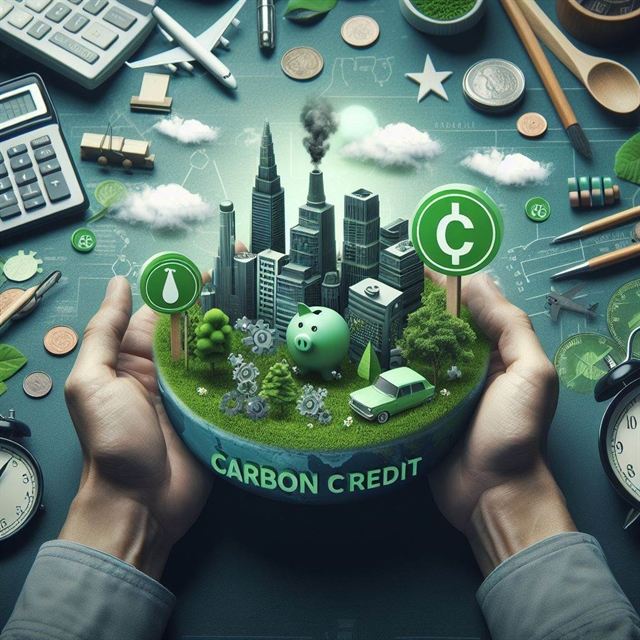 Environment
Environment

 |
| LNG Thị Vải Terminal in Bà Rịa-Vũng Tàu Province. — Photo courtesy of Petrovietnam |
HÀ NỘI — The Vietnam Oil and Gas Group (Petrovietnam) and its members have implemented a series of measures to reduce greenhouse gas emissions and convert to green energy.
This part of efforts to protect the environment and combat climate change.
Emissions from Petrovietnam's production activities account for a small proportion of the total emissions in the energy sector which has been driven by adoption of modern equipment systems and production technology, considered advanced compared to the overall level of Việt Nam's energy industry.
According to 2020 data, Petrovietnam's emissions account for only about 7 per cent of the energy sector's greenhouse gas (GHG) emissions (19.5 out of 273 million tonnes of CO2 equivalent).
However, in the period up to 2035 with a vision to 2050, if there are no measures to reduce emissions, Petrovietnam's emission proportion will increase rapidly, mainly in the field of power industry.
Petrovietnam is updating its plan to reduce greenhouse gas emissions according to Việt Nam's new commitments.
By 2025, the group is expected to cut 15.55 million tonnes of CO2 compared to baseline emissions in 2010. During the 2031-50 period, Petrovietnam plans to deploy solutions to 'green' coal power plants and develop carbon capture, utilisation and storage (CCS/CCUS) technology technologies.
It will also continue to pursue feasible clean energy projects like hydrogen and green ammonia, aiming to participate in regional and global markets. Additionally, Petrovietnam will work on transitioning to clean fuels for maritime transport.
Many member units of Petrovietnam are also actively implementing green transformation.
As a company using a large amount of fuel and emitting a large amount of greenhouse gasses, PetroVietnam Power Cooperation (PV Power) aims to have 12 solutions to reduce emissions for implementation. At power plants, it is expected to reduce 160,884 tonnes of CO2e by 2025 and 72,150 tonnes by 2030.
PetroVietnam Gas Joint Stock Corporation (PV GAS) has also developed and implemented a roadmap to reduce greenhouse gas emissions in production facilities. The main focus includes researching and applying solutions to reduce and optimise energy and fuel use, developing LNG import projects through 'import hubs' connected to gas power plants and distributing LNG to existing and new markets, replacing higher-emission fuels like coal and oil.
Petrovietnam Exploration Production Corporation (PVEP) aim to reduce net emissions by 20 per cent by 2030, 50 per cent by 2040 and Net Zero by 2050. PVEP's long-term plan is carbon capture and storage (CCS) from emission sources, then transported to long-term storage sites.
CCS is considered one of the important measures to reduce greenhouse gas emissions of oil and gas enterprises.
A total of 34 oil and gas fields offshore Việt Nam have been evaluated for CO2 storage potential. Another important advantage is that large and stable financial potential will help Petrovietnam be fully capable of investing in large-scale and highly effective CCS projects.
This is also an opportunity for Petrovietnam to open a new business direction, creating carbon credits from CO2 recovery and storage in offshore oil and gas fields, pioneering in deploying CCS and generating profits from selling carbon credits or participating in carbon markets.
Besides adopting technological solutions, planting trees is the second main solution to help businesses accumulate carbon credits to be converted into emission rates.
.jpg) |
| Petrovietnam launches a tree planting campaign to restore forests in Cà Mau Province. — Photo courtesy of Petrovietnam |
Petrovietnam's chairman Lê Mạnh Hùng said: "For businesses, planting trees and afforestation is not only a social responsibility but also brings benefits when being recognised and granted carbon credits to offset emissions."
In 2022, Petrovietnam launched a campaign for all its staff and workers to plant three million trees at oil gas sites and localities with oil and gas activities in the period 2022-25. Over the past two years, Petrovietnam's members have planted and cared for 615,135 trees.
In April 2024, PVEP and PetroVietnam Camau Fertilizer Joint Stock Company (PVCFC) signed a Memorandum of Understanding with the Vietnamese Academy of Forest Sciences and Cà Mau Department of Agriculture and Rural Development to plant 40 hectares of new forest and 250,000 green trees in Cà Mau Province.
Climate change is one of the biggest challenges facing humanity. Reducing greenhouse gas emissions is essential to protect the environment and ensure a sustainable future. Carbon credit is an important tool in promoting sustainable development and achieving the Net Zero goal.
In Việt Nam, greenhouse gas emissions are about 400 million tonnes of CO2 equivalent, of which the energy sector accounts for about two-thirds. With the strong commitments of the Vietnamese Government at COP26, the domestic carbon credit market is forecast to grow rapidly in the near future.
From now until the end of 2027, Việt Nam will build regulatory systems and policies to create a foundation for the market, as well as establish and organise the pilot operation of a carbon credit exchange and will officially operate it from 2028. — VNS




